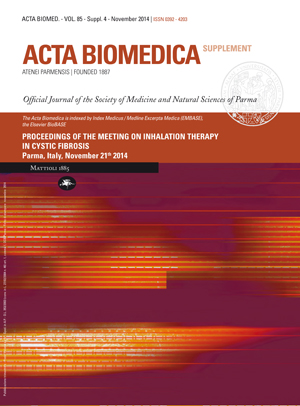Aerosolized hyaluronic acid and its applications
Keywords:
hyaluronic acid, respiratory disease, inhaled therapyAbstract
Although the interaction of low MW HA fragments with surface receptors such as TLRs may explain how HA can favor the inflammatory response, some physical and chemical properties, such as high MW HA, may increase its capability to retain water and to preserve the distensibility of elastic fibers that is dependent on the interaction with water molecules, thus enhancing pulmonary ventilation. Encouraging clinical results provide the beneficial effect of inhaled HA in CF patients who have previously shown poor tolerance to aerosolized hypertonic saline solution.Downloads
Issue
Section
License
This is an Open Access article distributed under the terms of the Creative Commons Attribution License (https://creativecommons.org/licenses/by-nc/4.0) which permits unrestricted use, distribution, and reproduction in any medium, provided the original work is properly cited.
Transfer of Copyright and Permission to Reproduce Parts of Published Papers.
Authors retain the copyright for their published work. No formal permission will be required to reproduce parts (tables or illustrations) of published papers, provided the source is quoted appropriately and reproduction has no commercial intent. Reproductions with commercial intent will require written permission and payment of royalties.



